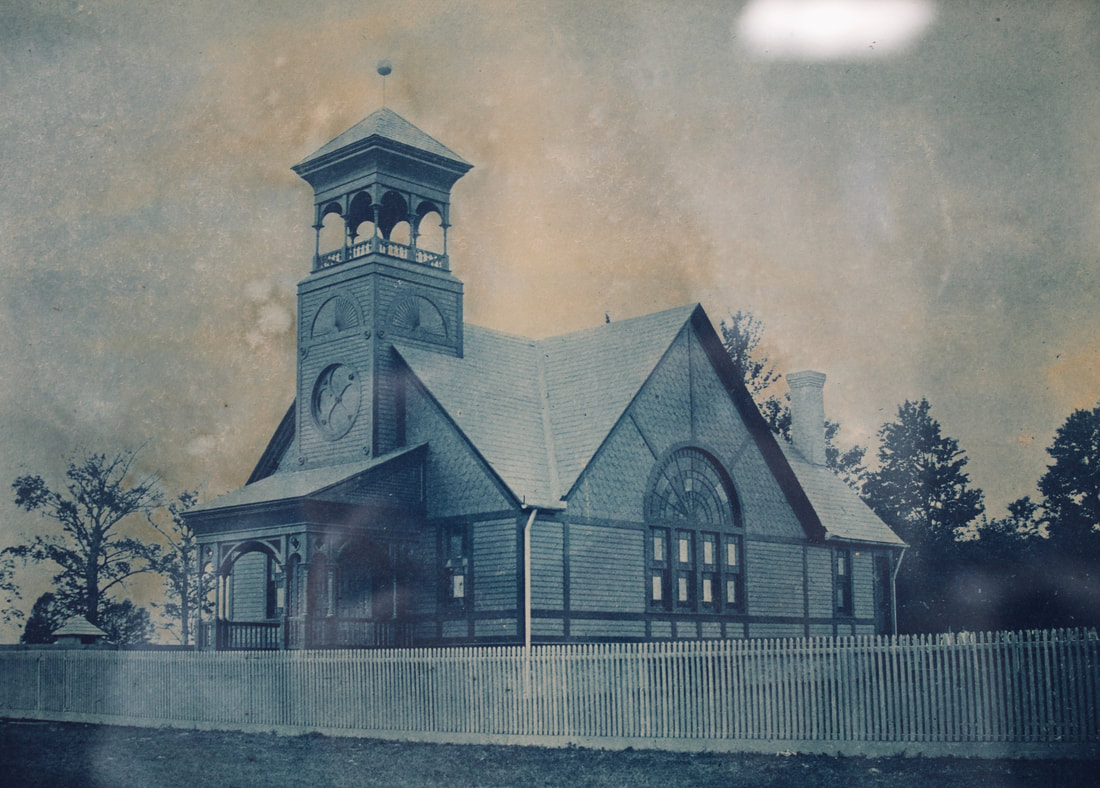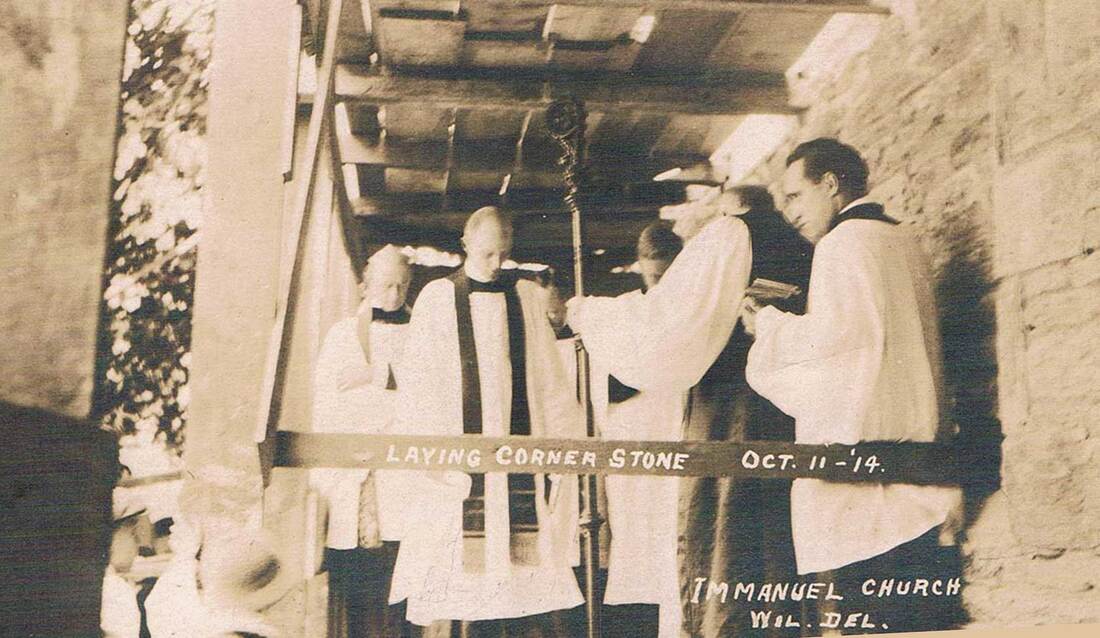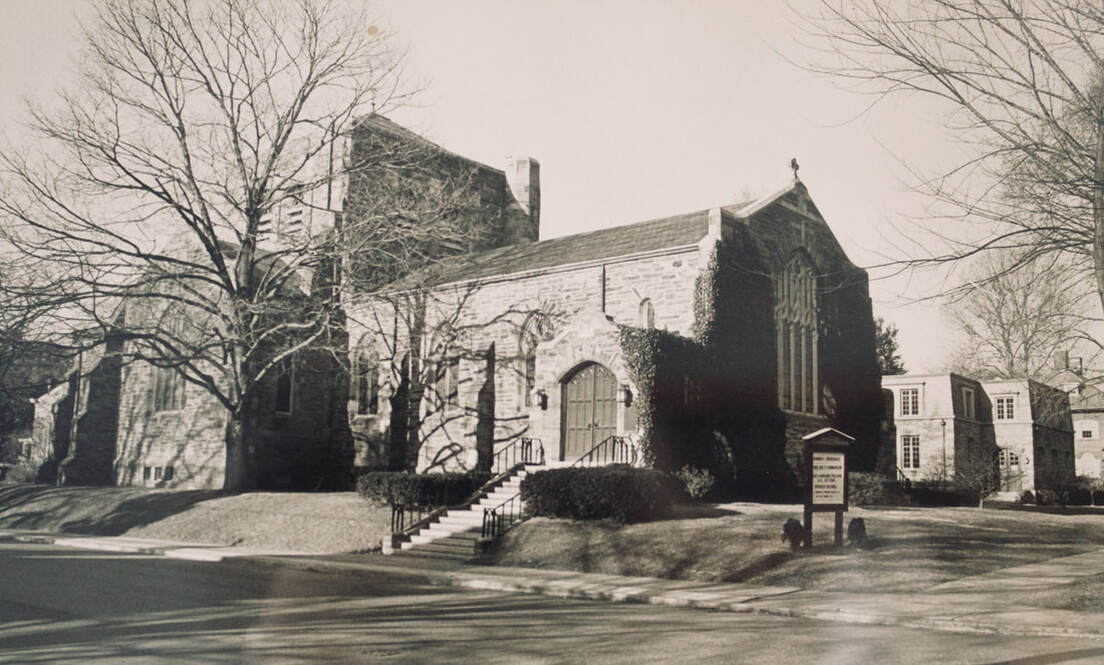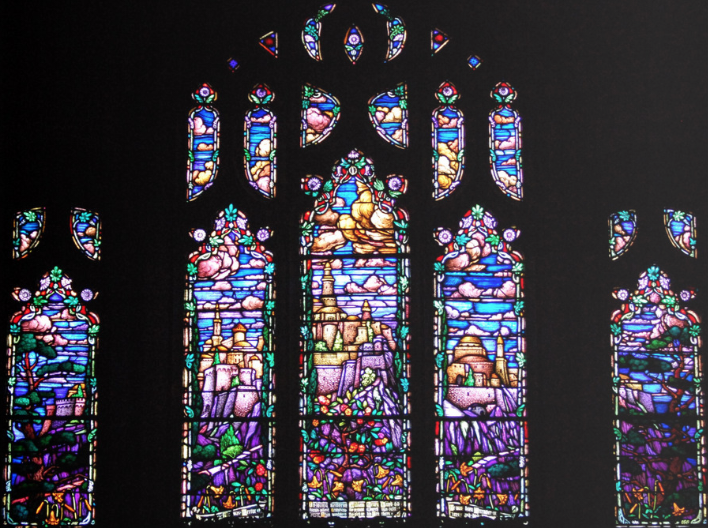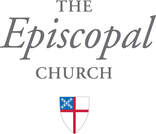1870-1914After the Civil War the English, Irish and Scottish settlers who worked in the nearby Bancroft Textile Mills wanted an Episcopal place of worship nearby, because neighboring churches were too far to reach on foot. As a result, Immanuel-Highlands had its start in 1870, in “cottage services” held in workers’ homes. A wooden structure called Immanuel Chapel (named for a late 1600s church, Immanuel New Castle) was built in 1884, on a donated lot, and consecrated on Advent Sunday, November 30, 1884. The chapel was built on the site of the present church at 17th Street and Riverview Avenue. It was used for thirty years, and then moved to make way for the new, our present, modified Gothic-style stone building that was completed in 1914.
|
|
The renowned artist and illustator, Frank Schoonover, an Immanuel member and Senior Warden of the Vestry, created 17 of our 21 stained glass windows. The first, City of God, was installed behind the altar in 1926, and today, we have 21 windows. The parish house was constructed afterwards. In 1961, Immanuel built a stone addition to serve as an educational wing. The structure is known as the “Clash Building”, named for the Rev. Charles W. Clash, Immanuel’s rector of 37 years.
|
Immanuel has sought to be in the forefront of social and spiritual activism. The 1950s reflected the time of relative affluence and growth. The decade of the 1960s was a time of social activism. As with many congregations, members of Immanuel had strong and diverse points of view, resulting in the departure of some parishioners who opposed activism by the church.
The 1970s and 1980s were again times of controversy and change in the Episcopal church, reflected by the adoption of the 1979 Book of Common Prayer and new Hymnal. Immanuel was a leader for liturgical reform within the Diocese of Delaware, adopting the Eucharist as the main Sunday service, setting up a free-standing altar in the crossing of the nave, eliminating the passing of an offering plate, establishing a monthly healing service, baking bread for the Eucharist, embracing the ordination of women, and renewing small study groups. In 2014, the congregation discerned that we would be a place of blessing of same-sex marriages.
The early 2000s saw renewed activity in maintaining and improving our facilities, including the installation of an elevator to provide access to all levels of our facility. In 2014, we celebrated the Centennial of our building by opening the 1914 time capsule, and replacing it with one representative of the 21st century Immanuel. Our Property Ministry is even more important today, as we seek to protect and maintain our beautiful church buildings.
Like any church, we have had our share of turmoil and hurt. The sudden death of one of our priests, fractured relationships with two priests, and long interims made the settled rectors we enjoyed even more important. Our most recent rector, Kim Capwell, served for 10 years before retiring in 2018. Since Fr. Kim’s retirement, the Vestry has met several times with the congregation to strengthen all of our lay ministries, and prioritize the challenges before us. Through this work a strategic plan has been developed and adopted, with target dates for implementation
Like any church, we have had our share of turmoil and hurt. The sudden death of one of our priests, fractured relationships with two priests, and long interims made the settled rectors we enjoyed even more important. Our most recent rector, Kim Capwell, served for 10 years before retiring in 2018. Since Fr. Kim’s retirement, the Vestry has met several times with the congregation to strengthen all of our lay ministries, and prioritize the challenges before us. Through this work a strategic plan has been developed and adopted, with target dates for implementation

